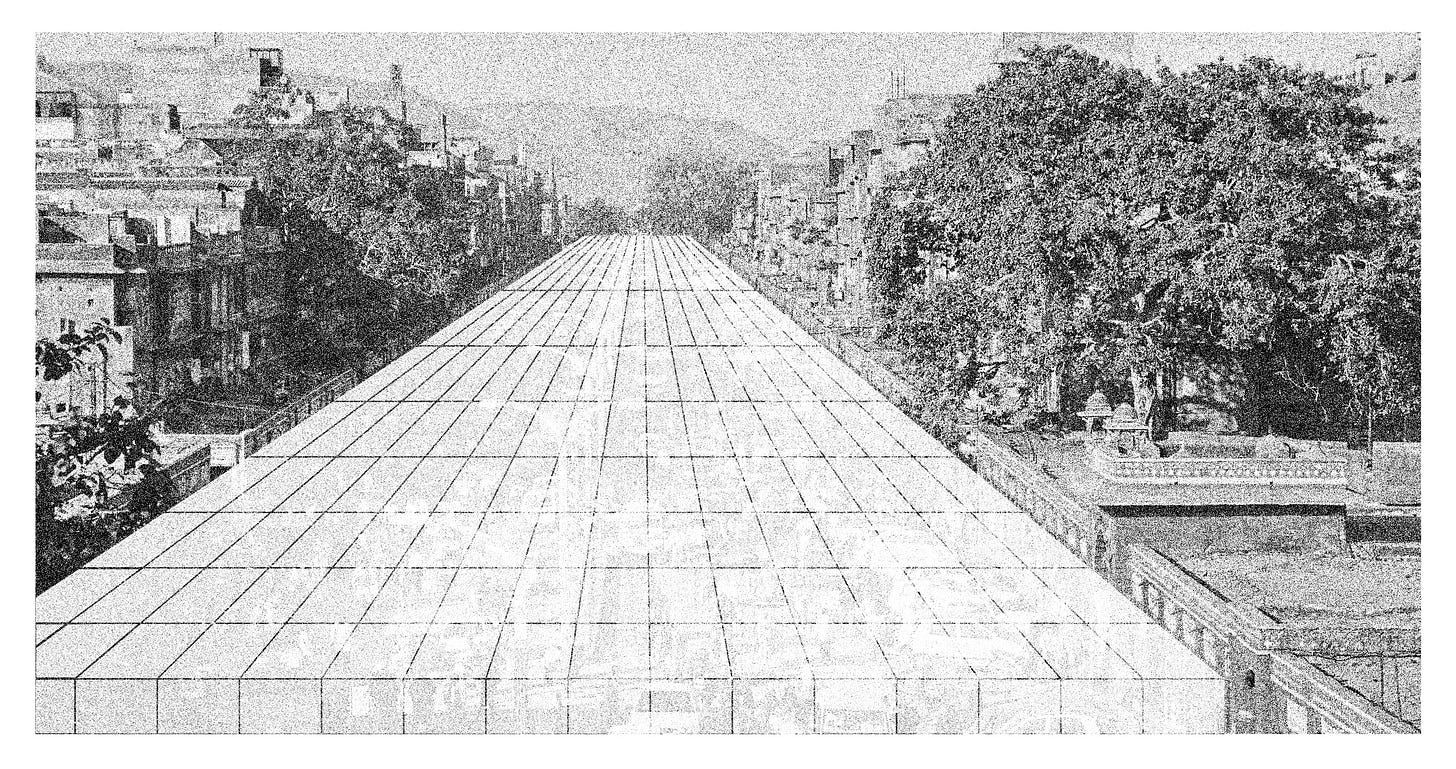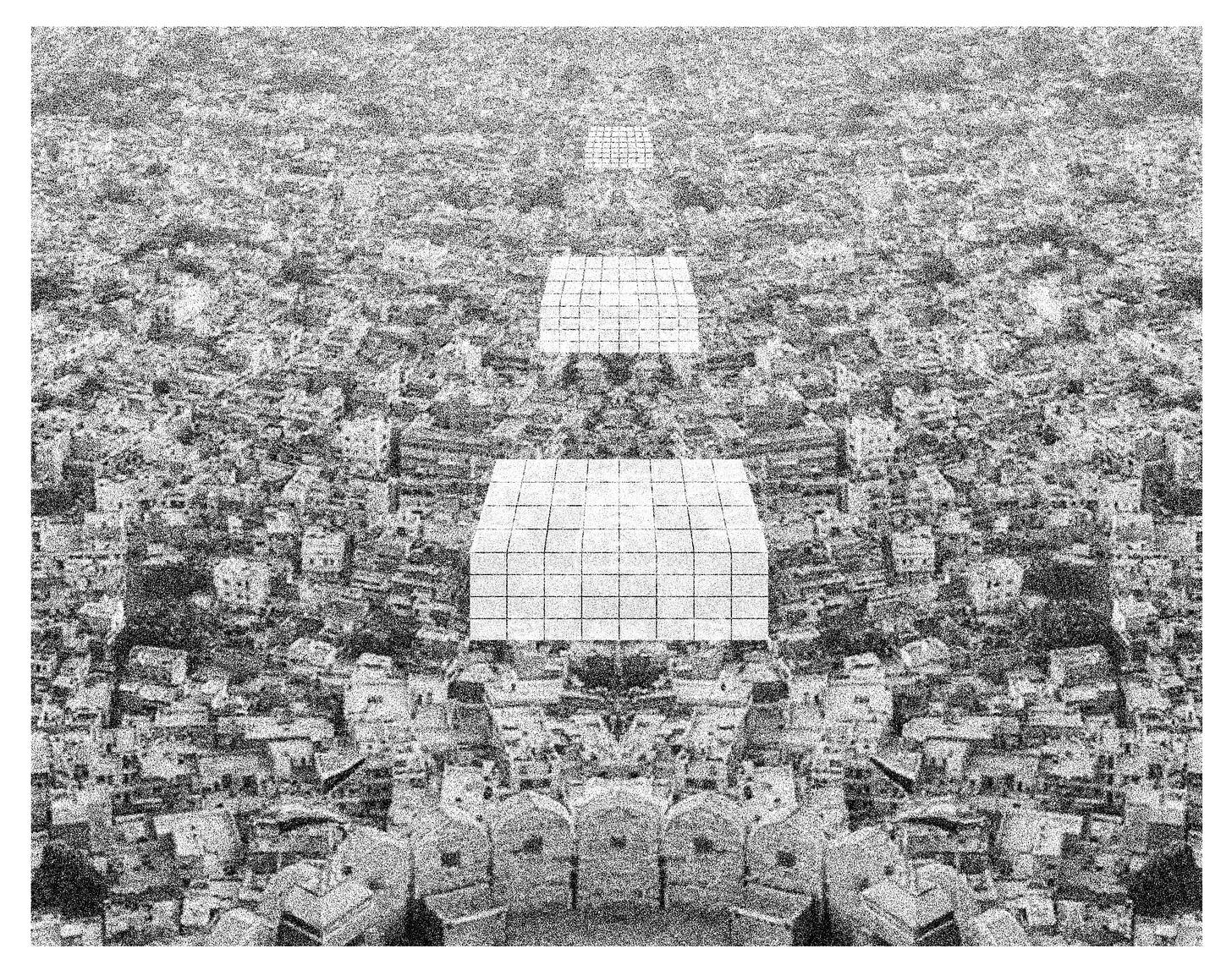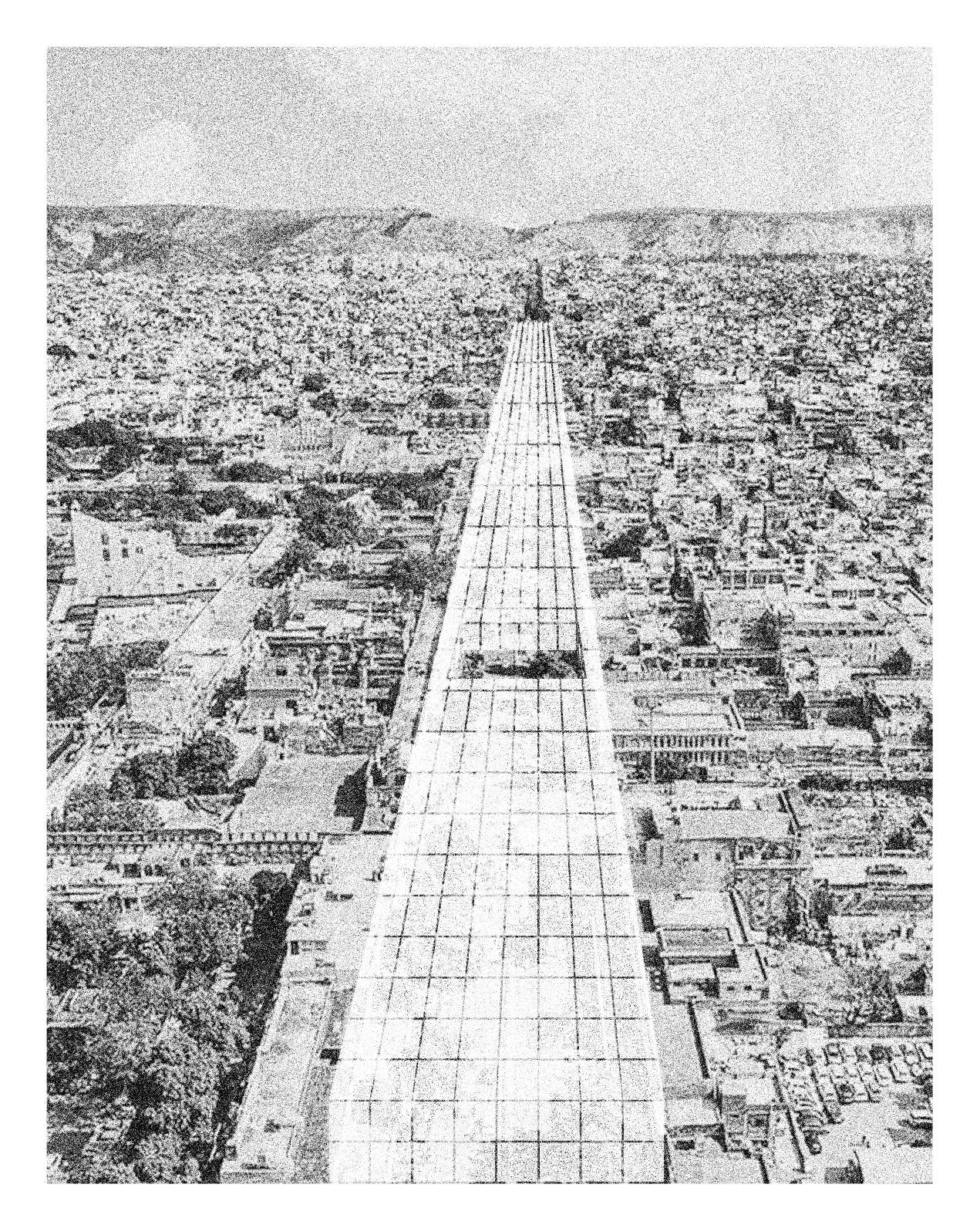Jaipur at the Crossroads: A City Divided
Balancing Cultural Legacy and the Tide of Globalization
Jaipur, the Pink City, is now a tale of two worlds. One, a carefully crafted heritage steeped in purpose; the other, a modern sprawl drowning in mediocrity. Can the city reclaim its balance, or is it destined to lose itself in the chaos of homogenization?
The Pink City stands at a crossroads, grappling with its identity as a UNESCO World Heritage site and a rapidly homogenizing urban sprawl. Its walled city, meticulously planned and contextual, is a living testament to cultural ideologies that once dictated its architectural ethos. Beyond those historic walls, however, lies a fragmented reality: a city losing its soul, succumbing to the bland anonymity of globalized architecture. Jaipur today is a tale of two cities—one rooted in history, the other adrift in a sea of sameness.
The Grid as a Guiding Principle
The historic city of Jaipur was designed on a grid system, a masterstroke of urban planning by Maharaja Sawai Jai Singh II. This grid wasn’t merely functional; it was symbolic. It allowed for natural ventilation in response to the region’s dry climate, fostered connectivity, and mirrored the cosmic order as per ancient Vastu Shastra principles. The walls that enclosed this city acted as guardians—not just of its people but of an architectural philosophy that married form and function with cultural identity.
But what happens when these walls become barriers, their protective nature turned inward? Today, the heritage city struggles to safeguard its contextual principles as it faces a homogenizing tide beyond its boundaries. The grid, once a symbol of order and identity, now appears as an ominous echo of Superstudio’s Continuous Monument.
The Specter of Homogenization
Superstudio’s Continuous Monument envisioned an endless grid, an omnipresent structure indifferent to the uniqueness of its surroundings. It critiqued the rise of architecture detached from its context, an allegory of globalization’s erasure of cultural and environmental specificity. Jaipur’s outskirts now reflect this dystopian vision.
Step outside the walled city, and the Pink City morphs into a landscape of architectural anonymity. Commercial buildings, uninspired housing complexes, and featureless malls dominate—a skyline that could belong anywhere, devoid of Jaipur’s unique identity. These spaces prioritize profitability over place, reducing architecture to mere investment opportunities. The irony is stark: a city famed for its distinctive architecture now risks becoming a mirror reflecting global uniformity.
Jaipur’s Two Identities
The walled city is a carefully composed symphony of climatic and contextual responsiveness. Its shaded streets and ventilated courtyards are not just aesthetic choices but solutions born of an intimate understanding of local conditions. In contrast, Jaipur’s contemporary developments are discordant notes—closed-off housing complexes and glass-clad offices ill-suited to the region’s heat, designed not for living but for commercialised selling.
This divide points to a troubling trend. Developers, under the guise of modernity, are abandoning Jaipur’s rich architectural heritage in favor of mass production. The result is an urban fabric that feels disconnected from its roots, buildings that could exist anywhere but belong nowhere. The walls that once unified Jaipur now delineate a city at war with itself.
The Cost of Progress Without Context
Progress and technological advancement are inevitable, even desirable. But when they come at the cost of erasing cultural memory, they lead to a hollow future. Jaipur’s evolution seems to disregard the principles that have shaped its identity for centuries. As the city expands, the focus shifts from creating spaces for living to producing units for profit.
This homogenization poses a fundamental question: can a city retain its soul while embracing modernity? For Jaipur, the answer lies in finding a balance—a way to integrate new developments without severing ties to its architectural ideologies that have a solid foundation with respect to climatic and contextual conditions.
The Urban Fabric Unraveled
The traditional urban fabric of Jaipur was designed to breathe. Its streets and homes facilitated movement, natural light, and airflow—an antidote to the arid climate. This ethos of openness and connectivity contrasts sharply with the architecture of containment that now defines much of its periphery. The sprawling housing complexes and generic office parks are insulated, unresponsive, and sterile, a far cry from the city’s heritage of vibrant, communal spaces.
Towards a New Ideology
Jaipur’s predicament is not unique. Cities worldwide face the tension between preservation and progress. What sets Jaipur apart is the urgency of its situation. As a UNESCO World Heritage site, it carries the responsibility of preserving not just buildings but the ideologies they represent.
To resist homogenization, Jaipur must reimagine its approach to urban development. Architects, planners, and policymakers need to champion designs that respond to context rather than ignore it. This does not mean halting progress but redefining it—replacing blind imitation with innovation rooted in place.
Conclusion: A Wall or a Mirror?
The walls of Jaipur’s heritage city now stand as mirrors, reflecting the city’s dual identities. On one side, they preserve a rich legacy; on the other, they reveal a creeping erasure of that legacy in the name of development. Will these walls continue to protect Jaipur’s architectural ideologies, or will they crumble under the weight of globalization?
Jaipur must decide whether to be a city that inspires—a beacon of contextual architecture in a homogenized world—or one that vanishes into the anonymity of global uniformity. The battle for Jaipur’s soul is not just about preserving its past but about shaping a meaningful future. The question is: will the Pink City rise to the challenge, or will it fade into the gray of indifference
If this exploration of radical architectural thought resonates with you, join me on this journey. I’ll delve into more conceptual projects in the coming weeks—stories that challenge how we see our cities, our spaces, and ourselves.
Subscribe to my newsletter and let’s imagine together.









